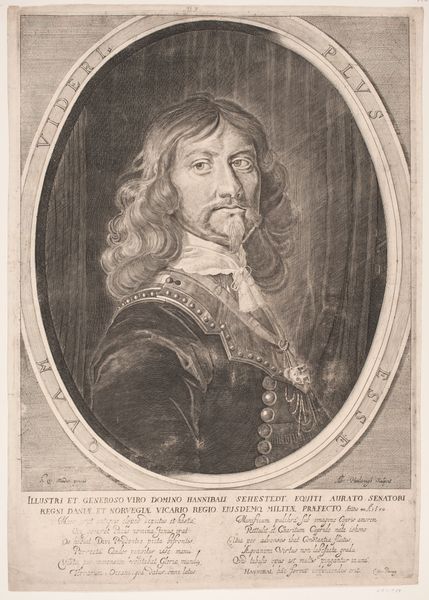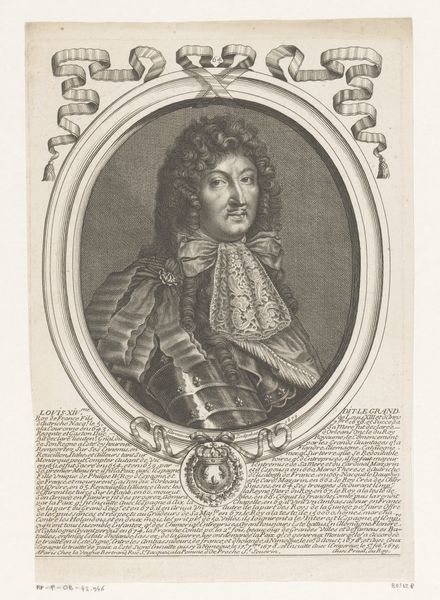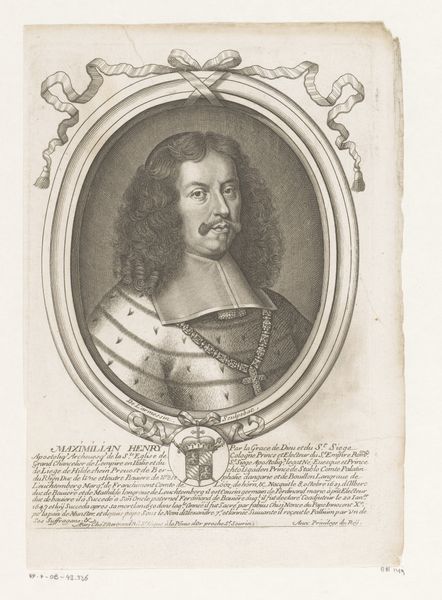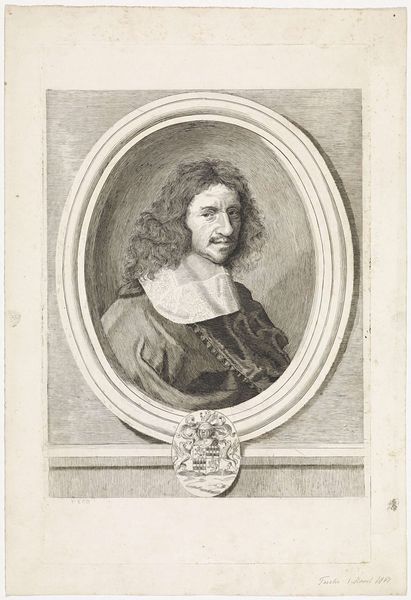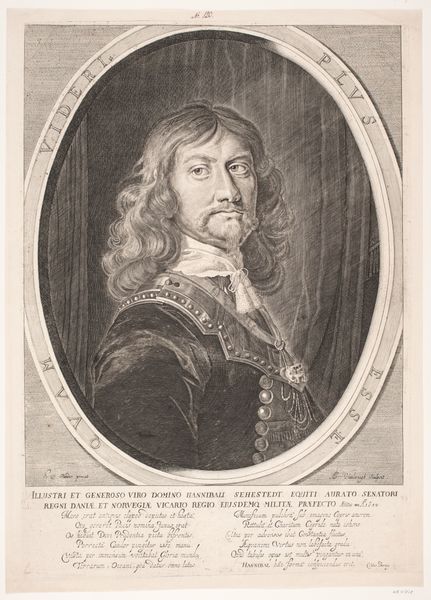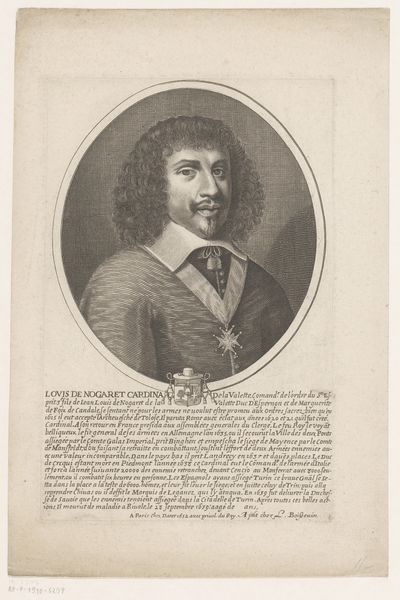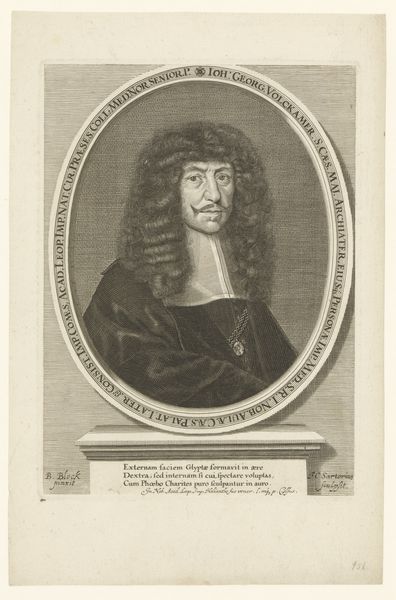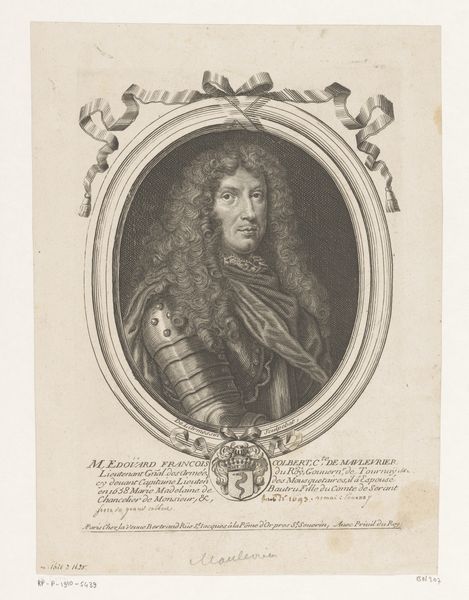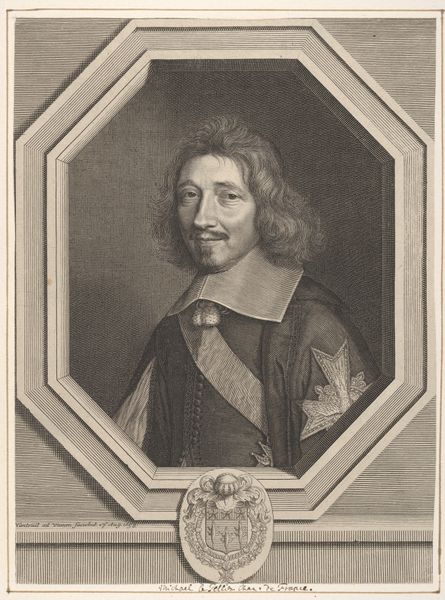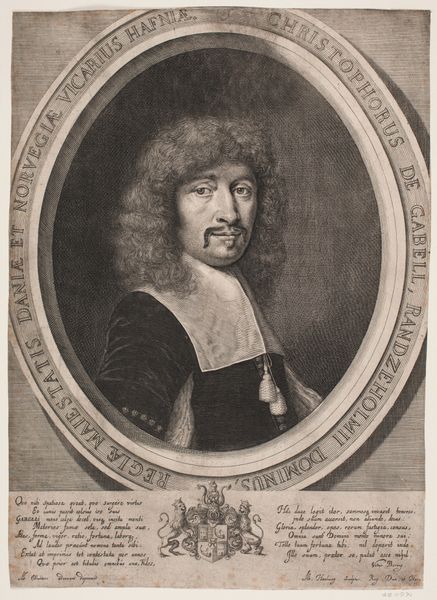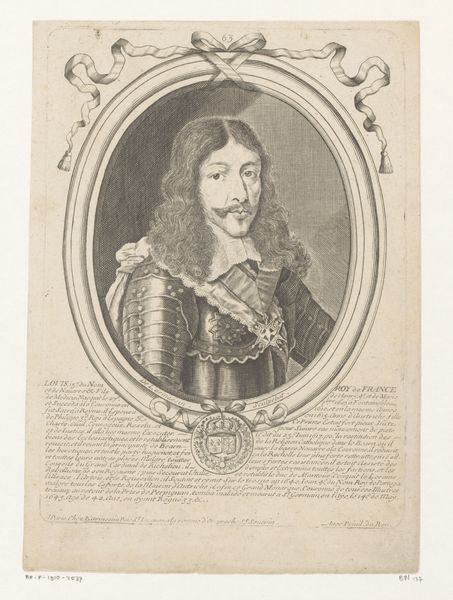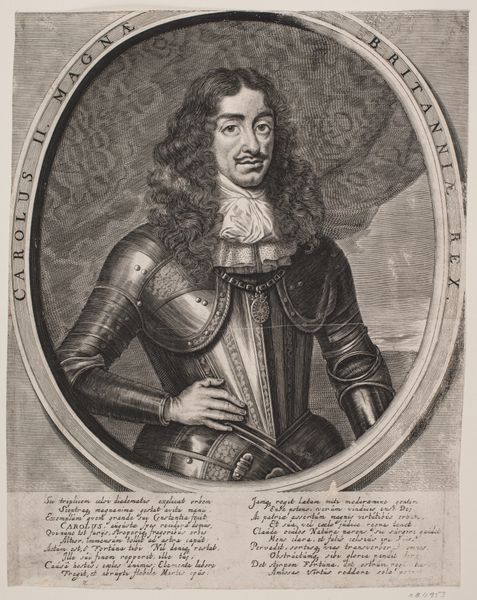
print, engraving
#
portrait
#
baroque
# print
#
old engraving style
#
history-painting
#
engraving
Dimensions: height 205 mm, width 133 mm
Copyright: Rijks Museum: Open Domain
Curator: Standing before us is a 1652 engraving, "Portret van Charles II de Créquy," crafted by Jean Frosne. It’s a striking portrait executed in the baroque style. Editor: Wow, a portrait frozen in ink. Look at the fine details in the armor—gives off such a strong impression of steadfastness. Almost severe. Curator: The printmaking process allows for widespread dissemination, turning this depiction of nobility into a relatively accessible item. Editor: Yes, and note the intricate layering of line work – the shadows on his face, the weight of the curls. It’s almost painterly, wouldn't you agree? One hardly associates such soft lines with “armor". Curator: Engravings were, indeed, often attempts to mimic the look and feel of painted portraits, albeit with a focus on line and repeatable imagery. Consider too, the textual inscription beneath. Much like contemporary printed news, text like this acted as a material vehicle for relaying specific events and constructing reputation. Editor: Exactly. To think of an artwork functioning as an instrument of image-crafting intrigues me endlessly! You start wondering: how much did Charles II dictate, if anything, and how aware of this construction he might have been? What do you think? Curator: Well, the extent of Charles II's direct involvement in commissioning this piece remains unclear, of course. However, we can say definitively that portraits such as this fulfilled important social and political functions. The attention given to details, such as the coat of arms and attire, served to emphasize social status and legitimize power, helping him function on the world's stage. Editor: An interesting glimpse into the construction of identity then, particularly intriguing in its material and social contexts! Thank you! Curator: Indeed. The means of artmaking are inevitably tangled in complex webs of material consumption, cultural symbolism, and historical circumstances.
Comments
No comments
Be the first to comment and join the conversation on the ultimate creative platform.
